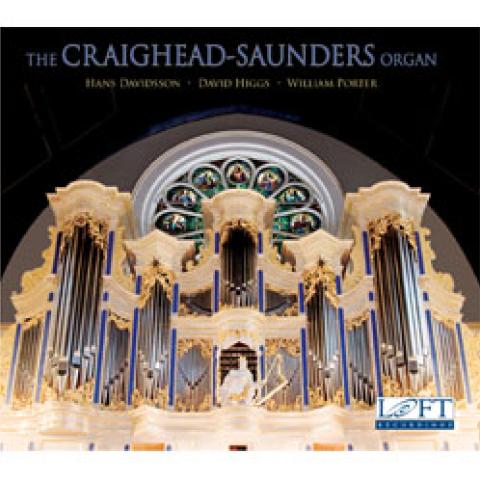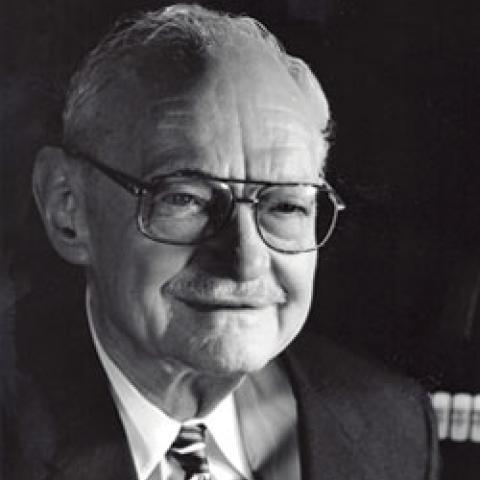Hans Davidsson is general artistic and research director of the Göteborg Organ Art Center, GOArt, as well as artistic director of the Göteborg International Organ Academy. In 2001, he was appointed professor of organ at the Eastman School Music and project director of the Eastman Rochester Organ Initiative (EROI). In 2006, he was appointed visiting professor at the Bremen Hochschule für Künste, Fachbereich für Musik.

When the Eastman School of Music at the University of Rochester opened its doors in downtown Rochester, New York in 1921, its benefactor George Eastman made sure that the first class of organ students had facilities that were state of the art, and a superb faculty. In the early twentieth century, Eastman’s truly American vision of the pinnacle of the organ art even allowed that first class of students to choose whether to study “theatre organ” or “legitimate organ” playing. To meet twenty-first-century needs for organ education with the same energy, vision and commitment, Eastman has embarked on a program called the Eastman Rochester Organ Initiative, or EROI. EROI’s main goal has been to update and expand Eastman’s collection of instruments for the whole range of the organ repertoire, making it a global organ facility. EROI’s first major step was to install the largest Italian Baroque organ in North America in the Memorial Art Gallery of the University of Rochester in 2005. Its next project will be to restore the Skinner Organ Company’s Opus 325 at Eastman’s Kilbourn Hall to its original 1921 condition. The current phase, the Craighead-Saunders Organ, will be inaugurated in Christ Church (Episcopal) across from the Eastman School of Music on October 16 at EROI’s seventh annual organ festival.
The Craighead-Saunders Organ is a new two-manual, 33-stop instrument named after David Craighead and Russell Saunders, two renowned professors of organ at the Eastman School of Music. They will both be celebrated by faculty, students and alumni at the opening symposium of this year’s festival, including the presentation of a new biography of Russell Saunders by Martha H. Sobaje.
The Craighead-Saunders Organ is a scientific reconstruction of an organ from 1776 built by Adam Gottlob Casparini for the Holy Ghost Church in Vilnius, Lithuania, and represents a Baltic-North European building style from the height of Enlightenment-era Europe. The finished instrument is the result of a six-year interdisciplinary research project between GOArt (the Göteborg Organ Art Center) and the Eastman School of Music on the processes of eighteenth-century organ building. GOArt is an interdisciplinary research center at Gothenburg University in Sweden, devoted to the study of the organ and related keyboard instruments and their music. A basic idea shaping GOArt’s research environment is to study the organ not just as a musical instrument, but also as a visual object, cultural artifact, and technological construction, and to communicate its research results to students, scholars and builders. In this latest project, GOArt worked in collaboration with a reference group that included leading American organbuilders as well as key members of Eastman’s faculty. This reference group made decisions for the project by consensus through the entire design and building process.
The result is a new and fresh instrument that challenges us to listen to, look at, and interact with an aesthetic that hasn’t been experienced this way anywhere since the end of the eighteenth century. The instrument’s soundscape is made up of over 1800 carefully reconstructed pipes that have been voiced by Munetaka Yokota based on strict principles that follow the original instrument’s design and documentation. Its case, built following eighteenth-century methods, creates an object like a Baroque theater set, painted in egg tempera and gilded and hand-burnished by German experts and a small army of volunteers. The colorful instrument and its generously proportioned new timber-frame balcony will provide an opportunity to explore eighteenth-century vocal and ensemble music using a large organ as the main continuo instrument. The tonal resources will make it possible to explore traditional continuo registration practice in this repertoire for the first time in a century.
The Craighead-Saunders Organ’s potential to offer new perspectives on the music of J. S. Bach and his sons and pupils has inspired the two-day symposium at the heart of this year’s EROI Festival, entitled “J. S. Bach and the Organ.” This symposium, co-sponsored by the Westfield Center, brings together leading Bach scholars and performers from around the world. Highlights will include the 2008 Glenn E. Watkins Lecture delivered by Christoph Wolff, as well as a concert of Bach’s cantatas performed by members of the Christ Church Schola Cantorum and the Boston Early Music Festival Chamber Players.
On Saturday the festival continues with a final symposium, “Reconstruction as a Model for Research and Creation,” co-sponsored by the Organ Historical Society. A natural continuation of the EROI Festival in 2007 (“New Dimensions in Organ Documentation and Conservation”), lectures and panel discussions will address the complementary process of documenting the original Casparini organ and creating the reconstruction in Rochester.
Rochester participates in the AGO Organ Spectacular
The 2008 EROI festival will help celebrate the American Guild of Organists’ International Day of the Organ here in Rochester. A Sunday afternoon program co-sponsored by the Rochester AGO chapter, “Organ Spectacular—An International Organ Celebration,” will give alumni and registered participants the opportunity to experience the wide range of Rochester’s growing organ landscape. This year, two new organs in Rochester will have their inaugurations during the festival. Paul Fritts has just completed his Opus 26 for Sacred Heart Cathedral, and George Taylor and John Boody the new Tannenberg-style organ, Opus 57, in Pittsford First Presbyterian Church. Throughout the day, other participating venues and area churches will offer open houses, mini-concerts, and/or organ demonstrations by resident organists and Eastman students. This will take place in cooperation with the Rochester AGO chapter. For more information and a list of events and locations, contact Nicole Marane, event coordinator (nicmarane@gmail.com), or visit the EROI (www.rochester.edu/EROI) or Rochester AGO (www.agorochester.org) websites.
The inaugural festival for the Craighead-Saunders Organ at Christ Church will take place October 16–20 in conjunction with the University of Rochester’s Meliora Weekend and the Eastman School of Music’s Eastman Weekend. Registration materials are available online on the EROI website. For more information on the Craighead-Saunders Organ and recent photos, visit <www.esm.rochester.edu/EROI/c-s.php>.
Spellings and capitalizations are all according to the original stop labels from the 1776 Casparini organ and the order is given according to the use of these capitalizations.
CLAVIATURA PRIMA
BOURDUN. á 16.
PRINCIPAL. á 8.
HOHLFLAUT. á 8.
QVINTATHON. á 8.
Octava Principal. á 4.
Flaut Travers. á 4.
Super Octava. á 2.
Flasch Flot. á 2.
Qvinta. á 5.
Tertia. á 1 3/5
Mixtura. á 5. Choris.
Trompet. á 8.
Claviatura Secunda
PRINCIPAL. á 4.
IULA. á 8.
Principal Amalel. á 8.
Unda Maris. á 8.
Flaut Major. á 8.
Flaut Minor. á 4.
Spiel Flet. á 4.
Octava. á 2.
Wald Flot. á 2.
Mixtura. á 4. Choris.
Vox Humana. á 8.
Dulcian. á 16.*
PEDAL
Principal Bass. á 16.
Violon Bass. á 16.
Full Bass. á 12.
Octava Bass. á 8.
Flaut & Quint Bass. á 8.
Super Octava Bass. á 4.
Posaun Bass. á 16.
Trompet Bass. á 8.
*This position was never occupied on the original windchest.
There is no information preserved about the type and pitch of the reed stop once planned for this position. The Craighead-Saunders Organ has a Dulcian 16?.
Accessories
Ventil ad Claviaturam Primam.
Ventil ad Claviaturam Secundum.
Ventil Pedall.
2 Tremulants
BEBNY. (Drum)
Vox Campanarum (Glockenspiel)
Gwiazdy. (Cymbelstern)
Kalilujactgo. (Calcant)
Shove Coupler (Claviatura Secunda to Claviatura Prima)
Pedal to Claviaturam Primam Coupler
Compass: Manuals: C–d3; Pedal: C–d1




